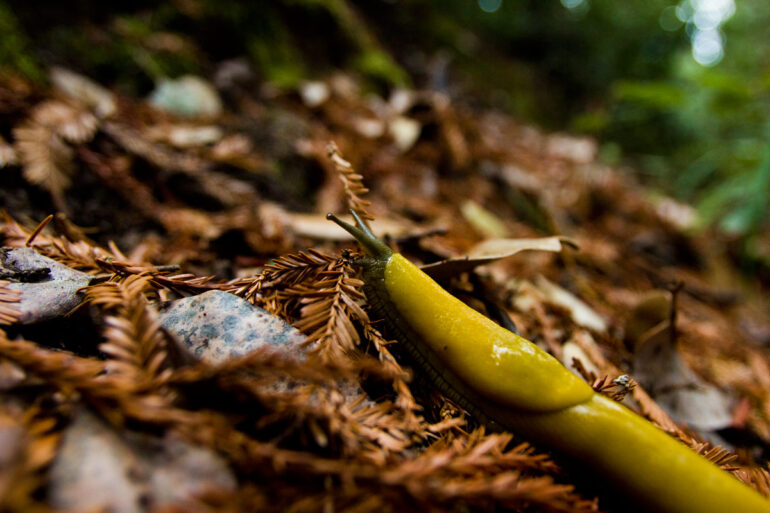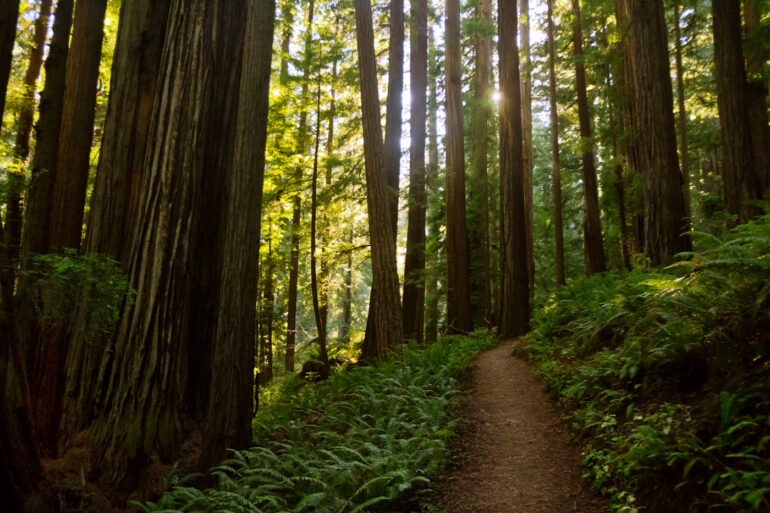We may earn a commission when you purchase through affiliate links. Learn more.
The tallest trees on Earth are the coast redwoods — majestic and colossal, their trunks tower into the sky, sometimes reaching heights of more than 300 feet, as tall as a 30 story building. Their lifespan is as monumental as their scale, with some redwoods dating far beyond one thousand years in age. Once dominating more than two million acres in the mountains above the Pacific coast of California and southwestern Oregon, more than 90% of the old growth forest has been cut down.
If you’re in search of these giant trees, don’t worry — although their numbers and range has been reduced, there are still several places to see and photograph them such as Redwood National and State Parks, jointly administered by the National Park Service and California Department of Parks and Recreation, and comprised of Redwood National Park, Jedediah Smith State Park, Del Norte Coast State Park, and Prairie Creek Redwoods State Park.
1. Bring Fast Lenses
To say that redwood trees are tall would be a gross understatement! In a dense grove of coast redwoods, even on a sunny day you’ll find that the lighting can be very poor along the forest floor. Fast lenses, which have large maximum apertures that let in as much light as possible are going to be your best bet when it comes to getting great photos.
If you’re shooting with a lens that doesn’t have a very fast maximum aperture, you can raise your ISO speed, but be aware that if you push the ISO too high, you’ll start to see obvious digital noise in your photo.
2. The Redwood Forest is Wide Angle Territory
With trunks that stretch toward the clouds, you’ll need a wide angle lens if you want to even come close to capturing both the forest floor and the treetops and branches high above.
Lenses like the Nikon 10-24mm f/3.5-4.5G DX Wide Angle Zoom Lens or Nikon 14-24mm f/2.8G Wide Angle Zoom Lens and Canon EF-S 10-18mm f/4.5-5.6 IS STM Lens or Canon EF 16-35mm f/2.8L II USM Ultra Wide Angle Zoom Lens can allow photographers to capture a greater field of view in the redwood forest.
3. Don’t Forget your Tripod
You might not think of the redwood forests as a place where you’d need a tripod, but in the low-light conditions that exist, a tripod can help you steady your camera when shooting at slower shutter speeds, allowing you to get noise free photos. If your lenses aren’t especially fast with a maximum aperture like f/2.8 or if you don’t want to capture a shallow depth of field in your images, a tripod is a definite must-have item for the photographer in the forest.
Additionally, hidden among the giant trees are numerous rivers, streams, and waterfalls — all presenting ample opportunities for capturing some beautiful long exposure photos. If you don’t have a tripod and don’t want to spend a small fortune buying one, there are several excellent, lightweight options priced at or under $200 including the MeFOTO RoadTrip Tripod, Slik Sprint Pro II Tripod, and Induro AKB1 Tripod.

4. Rain and Fog are Desirable
While most photographers cross their fingers for sun, when it comes to photographing in the redwood forests, you’ll be crossing your fingers for moist, foggy days. The coast redwood forests are always stunning, but they become truly lush and verdant after a rainstorm or foggy weather, when the moisture gives new life to the moss and ferns, creating a truly vibrant scene of endless greenery. In the early morning and late afternoon of a foggy day when the sun is low in the sky, you might even be able to capture the amazing sight of beams of light streaming through the trees. Be sure to prepare for a rainy day with these tips for keeping your camera gear working in rain and humid conditions.
Learn How to Protect your Gear from Moisture & Rain
The moss & fern filled redwood forests look even better in the rain and fog, but you'll need to take care to keep your camera equipment safe. This tutorial offers several tips for shooting in moist conditions:
5. Point your Camera Up
When a redwood tree dies or is cut down, from its stump often emerge a ring of new growths, sending up new trees in a circle around where the old tree once stood. With a wide angle lens, you’ll be able to capture one of these redwood circles, which makes for a great shot.

6. Don’t Ignore the Details
Surrounded by some of the most enormous trees you’ll ever see, it’s easy to be distracted from the more subtle aspects of the forest. Remind yourself to focus on the details that will suddenly appear everywhere if you look closely — colorful and textured mushrooms poking through the fallen duff, moss filled with dewdrops, lichen covered boulders, bright yellow banana slugs sliding their way through the forest. Consider bringing along a macro lens like the Canon EF 100mm f/2.8 USM Macro lens or the Nikon 60mm f/2.8G ED Auto Focus-S Micro-Nikkor Lens to really get up close and personal with your small forest subjects!

